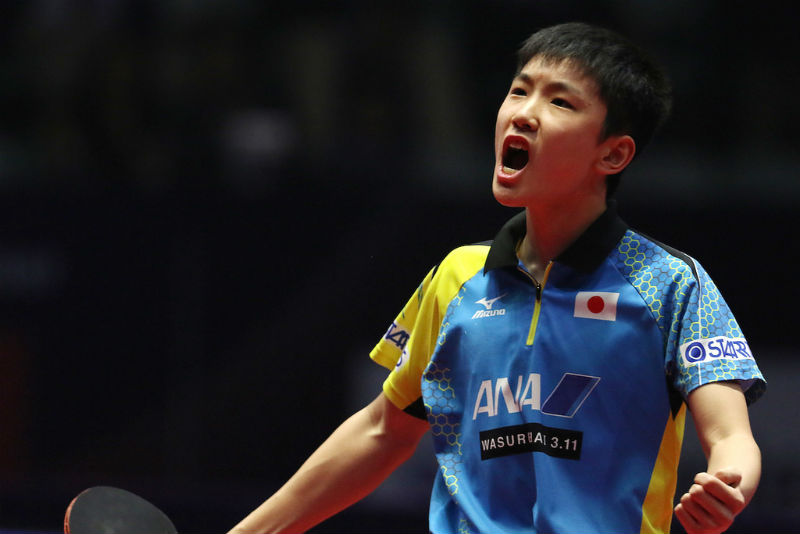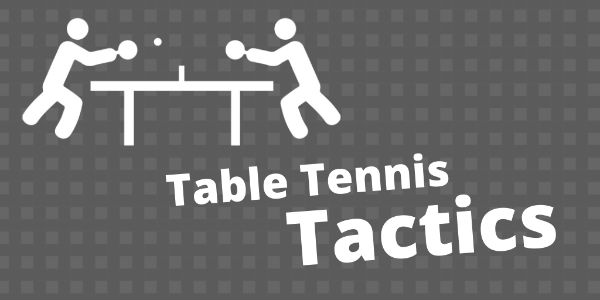
Spare a thought for the professional players who lost to Tomokazu Harimoto at the recent ITTF World Tour India Open.
Why? Because Harimoto is only 13-years-old. That’s right, THIRTEEN. On his way to the final he beat Alvaro Robles (ranked 102), Robert Gardos (ranked 46) and Sharath Kamal Achanta (ranked 62). Only Dimitrij Ovtcharov (ranked 5) was able to beat him.
This Japanese wonderkid is phenomenal (you can watch his semi-final victory against Achanta here).
Any adult who has played competitive table tennis at any level will be able to sympathise with Robles, Gardos and Achanta. We have all been there. We have all faced the unnerving and unglorified challenge of trying to beat a junior player. And not just any junior player. A junior who has been coached. A junior who has good technique and some great shots. A junior who plays without fear.
It’s a difficult situation. There is no glory in beating a junior, but if you don’t try your best, you can easily get beat / destroyed.
In this blog post, I’ll give you some tactics on how to beat a good junior player.
(Please note, this isn’t a blog post on how to beat Tomokazu Harimoto. Quite frankly, if he can beat full-time professional adults, the rest of us have absolutely no chance whatsoever! But you might want to look at this analysis by US coach Samson Dubina who has identified some weaknesses in Harimoto’s game).
What juniors are good at
The first thing to understand is that juniors, especially if they have been coached, are usually really good at fast, topspin rallies.
Why is this? The story usually goes something like this…
A junior will turn up at a table tennis club and show some promise. A coach, noting the potential, will offer some advice. The coach will get the junior driving and spinning the ball with good technique. As the junior doesn’t have 30 years of bad habits to undo (like some adults), he/she will develop good technique very quickly.
As the junior progresses, he/she will get more involved in local, regional or even national coaching sessions. The junior will spend a lot of time doing topspin drills to help develop his/her footwork, placement, consistency, speed and power with lots of other juniors.
After a year or two, there will be a strong group of juniors, playing in a similar way, doing endless drills to develop a very strong, fast topspin game.
As they train and play in a similar way, they all become very good at this topspin game. They can rally all day long!
So for us adults, taking on juniors at a topspin game can be dangerous. You’d better be good at topspin rallies yourself, otherwise you can get smashed all over the table.
So if going topspin to topspin with a junior is risky, what other tactics can you use?
Use lots of backspin
Whilst most juniors’ topspin game is very developed, I have often found they struggle with backspin. They haven’t spent nearly as much time practising pushes or looping backspin balls, as they have playing topspin rallies.
If you tie them up with backspin, they can start making lots of errors through mis-timed pushes or weak loops. Even if they can loop backspin balls, they don’t yet have the physical power to play blistering loops, so may give you the chance for some easy counter-attacks.
So try serving heavy backspin serves, forcing them to push and then keep your pushes low over the net with plenty of backspin. When receiving, try returning serves with backspin. Even do this with side-topspin or plain topspin serves. Really chop down on the ball to give a heavy backspin return and wait for the mistakes to happen or a loose ball to attack.
Vary the speed
Juniors like to play fast rallies, but they can struggle when the pace is slowed down. They will often struggle against players with slow bats or pimples, who are able to take the pace out of the rally. The ball just doesn’t come through to them as quick as they’re used to. Instead of adjusting to the slower pace, they tend to rush and play too early and make mistakes. So try using slow, short pushes, soft blocks and even slow but very spinny topspins.
Use the full area of the table
It’s time to get a bit cruel. You get the occasional full size junior who has started puberty extra early, but most juniors are small. One of the weaknesses of being small is that you have to work harder to cover all areas of the table. So use this to your advantage. Really try to find some wide angles with your shots and keep switching the play from wide forehand to wide backhand (or the other way around). You’ll soon have them scampering all over the table trying to keep up with you. And don’t forgot the short balls too. Very short serves and very short touch returns can be difficult for juniors to reach.
Serve with heavy spin
Juniors are usually pretty good at attacking weak serves. So you need to bring your best service game to the table. Make sure you serve with heavy spin. It doesn’t matter what type of serve – backspin, sidespin, topspin or variations of each spin, just make sure the spin is heavy. Returning serves takes a long time to master and juniors are still very much in the learning process so tend to struggle with high quality spin serves. And don’t be afraid to try something unusual, something a bit freaky! If you use a service action they are not familiar with, they probably won’t have a clue what to do.
Lob the ball high
If all else fails and you’re desperate to find a way to beat the pesky junior, try lobbing the ball up high. This will probably make you the most unpopular person in the room, but it can be very effective. Again, due to their size and lack of smashing practice, juniors are sometimes clueless about what to do with a high ball. The key is to get the ball very high and very long, with topspin or sidespin. And then watch the junior flap about in the air, trying to work out what to do. (Note: if the junior knows how to smash, this is likely to be a terrible tactic!)
Try your best
If you’re an adult playing a junior, it’s not a particularly enjoyable experience. If you win you feel slightly guilty. If you lose, you feel embarrassed.
But I think it’s important to try your best. If you play half-heartedly, there is very good chance you will lose. And it doesn’t actually help the junior player develop.
If you try your best and win, the junior player will be disappointed and you probably won’t feel ecstatic, but it will give the junior player an opportunity to learn and work out what he/she needs to do to improve.
And if there is one thing we all know about junior players, is that they can improve very quickly. This is another reason to try your best, as it may be the last time you can beat the junior player. In six months time when you play the junior again, he/she could have developed into the next Tomokazu Harimoto and absolutely thrash you. So enjoy beating the junior whilst you can!
Improve your tactical game
If you want more tactical tips, I recommend you join Tom’s TT Academy. You will also get access to a wide range of coaching content, including:
- in-depth courses
- training drills
- video analysis
- fitness videos
- robot training videos
- member discussions
- pro match analysis
- skill challenges
- and lot’s more!
You can access all this content for less than £1 per week. New content is added regularly. Join hundreds of table tennis players around the world today at tomsttacademy.com

